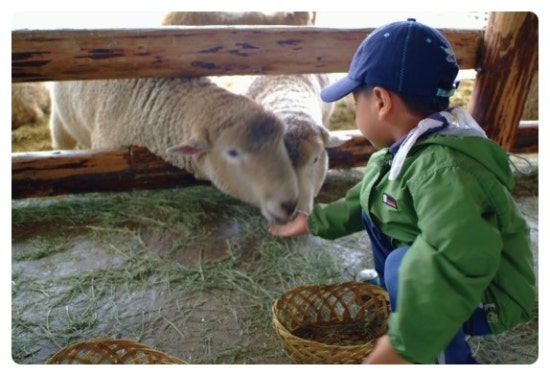Formatted Hard Disk
Tonight
Cambodian Student Get-together

Korea’s Healthy Winter Foods
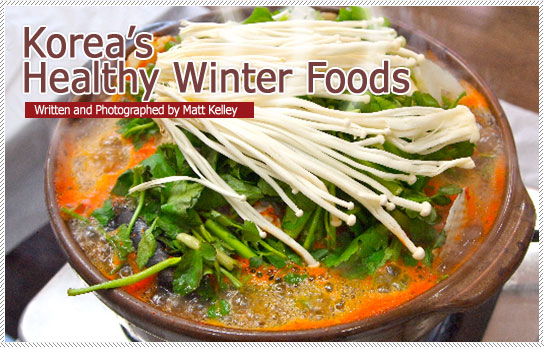 |
| Like most people, the item at the top of my winter to-do list is staying healthy. Of course, avoiding seasonal flu is easier said than done when chilly weather forces us indoors where germs abound. So, what to do? Aside from washing hands and getting sufficient rest, keeping yourself well fed with nutritious foods can keep sickness at bay. In much of the world, winter is about staying warm with piping hot soups and beverages. Korea certainly experiences a robust winter of chapping winds, cold temperatures and shrinking hours of daylight. Despite this, in Korea, hot soups are associated with summer heat, where “fighting fire with fire” is a hot weather tradition. Nevertheless, the Korean kitchen is full of hearty soups and stews, traditional porridges and medicinal teas, all perfect options to help keep you warm and healthy this winter. To give you a “taste” of what’s on offer, here’s a quick review. |
 |
| Soup figures prominently in the Korean diet. Served with virtually every meal, its ubiquity has spawned diversity. The perfect meal on a snowy afternoon is Gamjatang. The so-called “potato soup” is better known for its succulent pieces of pork, which are boiled (typically at your table) with sesame leaves, spinach, green onions, enoki mushrooms, spices and, yes, the occasional potato. As a peninsula, seafood soups also figure prominently in Korea. From the hot and spicy seafood smorgasbord called Haemultang, to the freshwater shrimp soup, Minmulsaewootang, and marsh clam soup, Jaecheopguk, Korea’s seafood soups are a fantastic alternative to land-based meats. If you crave some land fowl, however, your best bet is Samgyetang, a soup made from a whole young chicken stuffed with glutinous rice and boiled in a ginseng broth. Beyond its lovely taste, Samgyetang is fun to eat. As your spoon emerges from the earthenware bowl, it’s a guessing game to discover what emerges. Will it be a clove of garlic or a gingko nut? A cracked walnut or dried jujube? Traditionally eaten on “Sambok,” the three hottest days of the year, the wholesome soup is said to protect the body and restore energy. Not to be missed, beef is another staple of Korean soups. The sister soups of Gomtang (beef brisket and tripe soup) and Seolleongtang (ox bone soup) are two popular options that claim to buoy one’s health. Seolleongtang is a widely loved winter soup. Made from ox leg bones simmered for eight hours or more, the milky white broth is seasoned by the customer with coarse salt, green onions or chili pepper powder. Some restaurants will serve it with wheat or sweet potato noodles, while most customers tip their tin of rice into the broth, mix, and enjoy. Finally, as you’ve probably noticed, many Korean soups end with “tang,” but another common suffix is “guk,” as in Tteokguk. This soup actually is associated with winter, since it’s typically enjoyed on New Year’s Day. The chewy sliced rice cakes, called “tteok” in Korean, are said to resemble coins, thus ensuring a healthy and prosperous year to come. |
 |
| Perhaps you still can’t tell your “guk” from your “tang?” Nevertheless, we’re going to throw more into the pot, if you will. “Jjigae” and “jjim” are two Korean types of stew. Distinguishing soup from stew is more art than science, but the latter usually refers to a dish where the broth has reduced significantly and the other ingredients dominate. Two of the nation’s most popular stews are Kimchi jjigae (spicy pickled cabbage stew) and Doenjang jjigae (soybean paste stew). While it takes some people a while to fully appreciate doenjang (think of miso soup with a lot more character), the fermented soybean is a staple in Korean cuisine. During the fermentation process, the liquid form becomes soy sauce while the solid is crushed into paste. When added to an anchovy stock, hot pepper paste, vegetables, garlic and thick slabs of tofu, the result is a delicious and pungent stew. Korea’s best soybean paste is said to come from Sunchang County. The tiny hamlet of North Jeolla Province also boasts the nation’s highest proportion of residents over age 85. Since Doenjang is packed with essential amino acids, vitamins and antioxidants, perhaps it’s more than just a coincidence? Similar to jjigae, jjim is made by steaming or boiling marinated meat until the liquid is reduced even further. Examples of regional jjim include Andong’s Jjimdak steamed chicken and Masan’s Agujjim, a mix of anglerfish, sea squirt and soybean sprouts. My personal favorite is the sweet and spicy Galbijjim. The delectable dish’s beef short ribs are cooked over low heat with chef’s choice of vegetables, cellophane noodles, rice cakes and sometimes even a quail’s egg. |
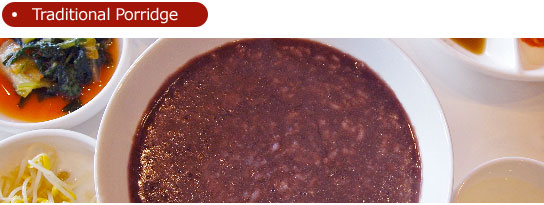 |
| In the unlikely event that you tire of Korea’s vast selection of soups and stews, another option that’s sure to warm your gullet is the traditional porridge, called juk. Made from boiled rice at about a 1:6 rice-to-water ratio, variations on the soup are popular from Sri Lanka to China, where it’s known as congee. Frequently advertised as a health food, juk is often served to the very old, very young and infirmed, since it is mild and easily digested. Korean juk comes in dozens of varieties, with vegetable and seafood porridge among the most common. Bean sprout, pumpkin, oyster and pollack are other options. Jeonbokjuk, an abalone gruel mixed with small pieces of carrot and green onion, is another favorite. If you’d like to spice up your gruel, add ground nuts or dried seaweed. Although the colorful seafood options are winter mainstays, my cold weather choice is the red bean porridge called patjuk. Red beans have a subtle flavor and are packed with fiber, protein and vitamins. Plus, frequently hiding beneath the purple surface are chewy balls of rice called birds’ eggs. Often eaten on Dongji, or the winter solstice, the vaguely red hue is said to bring good fortune and dispel evil spirits on the shortest day of the year. |
 |
| Finally, traditional tea has a long history in Korea. It’s been said that a tea offering was made to the spirit of King Suro some 1,300 years ago during the ancient kingdom of Gaya. Although daily tea ceremonies among the royals and aristocrats waned during the Joseon Dynasty (1394-1910), wild tea plants have grown continuously for centuries on Korea’s southern foothills, and today, tea represents a major regional export. Although tea comes in many types and colors, all tea originates from the same plant. Despite their common source, certain preparations are prized for their well-documented health benefits. For example, in addition to green tea, Yujacha (citron tea), Saenggangcha (ginger tea) and Ssanghwacha (harmonized energy tea) are frequently consumed as home cold remedies in Korea. Furthermore, tea served with locally harvested honey can relieve allergies, sore throats and coughing. |
FREE Concert Event(1.27~28)!!
បបរពោត
បបរពោត? You guys actually know this kind of dessert and some of you probably like it so much. To me, it is not the most favorite dessert of course but it doesn't mean that I hate it.
Everland to Hold Seollal Holiday Folk Festival

During the four-day festival period, visitors will have a chance to play different traditional folk games, or take photos with Everland mascots at the Carnival Square. Then, on the day of Seollal (January 23), the Dongchun Circus Team will present a special performance of traditional dance and acrobatics at the Everland Performance Hall.
Meanwhile, Everland has been showcasing over 50 animals that represent 12 zodiac signs or guardian deities known as Sibijisin since January 1st.
Korean New Year !
NEW YEAR's (Seoul) PARTY
You are cordially invited to NEW YEAR's (Seoul) PARTY l Host: (사) International Student Fellowship(ISF) l Date: January 21, 2012 (Sat) 11:00AM. – 15:00PM. l Place: Aeil Church (☎02)926-4941; http://aeil.or.kr/) l ☞250m from the exit number 6, Jeigidong station(No.125) in Subway 1 line, We are waiting for you in front of the exit #6) l Program: Lunch Buffet, Performances, Seol game, Raffle prizes etc. l Participation: 5,000Won (Including the lunch and souvenir) l How to register: Send an e-mail to Ms. Helen, isfkorea@empal.com; 010—2701-4688, including your name, gender, nationality, university, phone number, e-mail address |
Attractions of Pyeongchang, Winter Olympic Game City
Do you remember what happened on July 7th, 2011? Korea won a bid to host the Winter Olympic game in Pyeongchang. It was a huge triumph made of relentless challenge, support from whole nation and wish that moved IOC members.
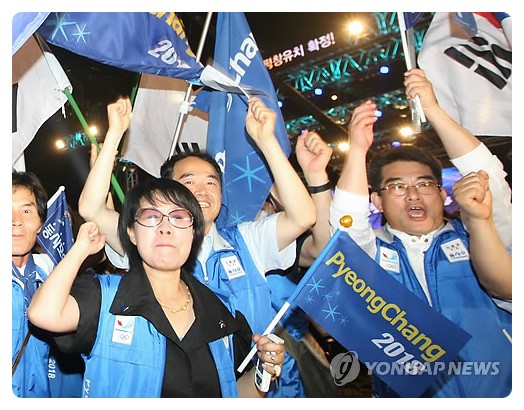
Daegwanryeong Ranch
Let’s go to Samyang ranch first. Take Yeongdong highway to Gangreung and exit at Heuinggye IC. Then, make a left turn, and pass a three-way intersection. Go straight and turn right at the next corner. Keep driving 8 more kilometers.
Samyang ranch is the largest one in Asia, located 1,140 meters high from sea level and 1,983 square meters in size. The ranch runs shuttle bus, which is nonstop to the peak. However when coming down, you can get off at either of four stops and take a walk. Shuttle bus doesn’t run in winter. Admission fee is 7,000 won for adult and 5,000 won for children. There are milk cow, sheep, Tajo, rabbit and goat in the ranch. Among them, the flock of milk cow and sheep are the ‘best’. The perfect season for visiting is spring and summer when they are all outside. If you visit in winter you’ll see them in their cages.
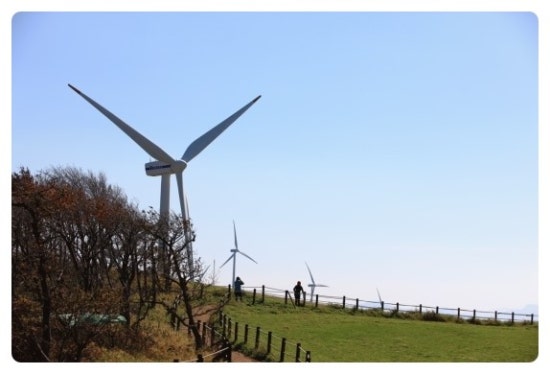
Past, Present and Future in Firs Road in Woljeong Temple

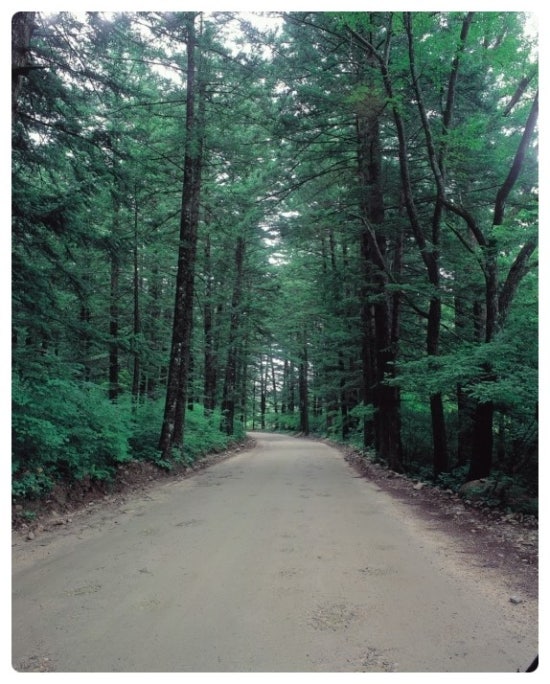
The Home of Herb Scents, Herbnara
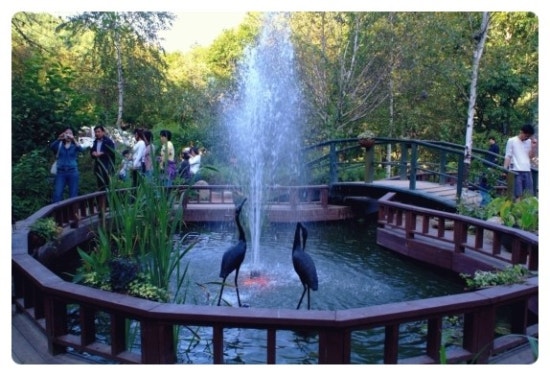
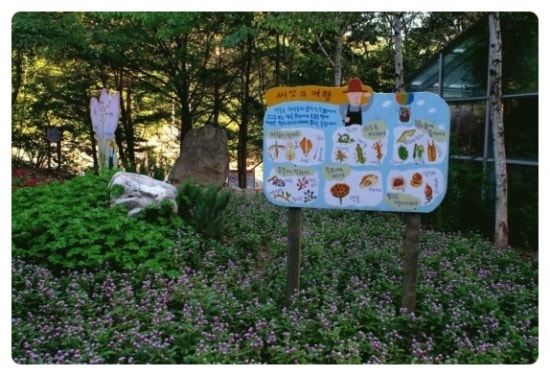
Daegwallyeong Snow Festival opens Jan 13th

During the festival period, diverse events and programs will take place including snow/ice sleigh riding, snow rafting, snow racing, bobsledding, and an igloo village tour. Giant ice sculptures around the festival site will welcome visitors. Guests may also participate in unique hands-on experience programs such as making traditional kites, masks, and arrows. Also organized are traditional folk games including jegichagi (similar to hacky sack) and neolttwigi (seesaw jumping).
Other splendors of the festival include an exciting winter tour to five different villages of the region where you may enjoy diverse leisure activities. Villages open for the tour include Daegwallyeong Sheep Farm and Uiyaji Wind Village.
1st UNAI ASPIRE ASSOCIATION Forum
Title: Aspire to Inspire before you Expire
UN Academic Impact is a global program initiated by United Nations Secretary General Ban, Ki-Moon to encourage higher education entities to take active roles in achieving the Millennium Development Goals (MDGs) by 2015.
...
The 1st UNAI ASPIRE Association Forum will be held at Handong Global University in Pohang, South Korea.
Date: January 16 (Mon) - 19 (Thurs), 2012
REGISTRATION
==========
Send an e-mail to request an application form:
aspirekorea@unaiaspire.org
jfakulie@yahoo.com
Registration Fee : 30,000 won(Accommodation and meal Provided)
If you have any other questions, please contact ASPIRE Korea Secretariat at 054-260-1784 or visit our website http://www.unaiaspire.org/
We ask for your interests and participation in the 1st UNAI ASPIRE Association Forum
Thank you
*The program will be processed in English but translation will be provided.
Korea as a Good Model of Women Policy

<2011 KWDI Workshop on Capacity Building for Women’s Policy of Cambodia and Indonesia> (Source: Korean Women’s Development Institute)
There is an expression like this, “The women-friendly country is indeed a developed country.” Now, Korea is becoming a good model of high techniques and advanced policies. A good and comfortable society is not built by a specific person but by every single one of us. Isn't it the first step of world peace to make the weak including women happy?
Free Ski Camp
Free Ski Camp(2.8~10)
For more information : http://www.kinsa.org/2714
Public transit pass for foreign tourists launched

M-PASS, short for Metropolitan Pass, is good for up to 20 rides per day of any subway lines in the Seoul metropolitan area (e.g. Seoul Subway Lines 1~9, Incheon Metro, Airport Metro Commuter (except Express)). The card comes in 5 types – one-day, two-day, three-day, five-day and seven-day passes. The one-day pass costs 10,000 won.
You may purchase M-PASS at I-Tour Seoul (Seoul Tourist Information Center) located in the Incheon International Airport Arrivals Terminal. On purchase, a 5,000 won deposit is required, which is refundable with a 500 won fee deducted upon returning the card at wherever you purchased it or at any GS convenience store.












